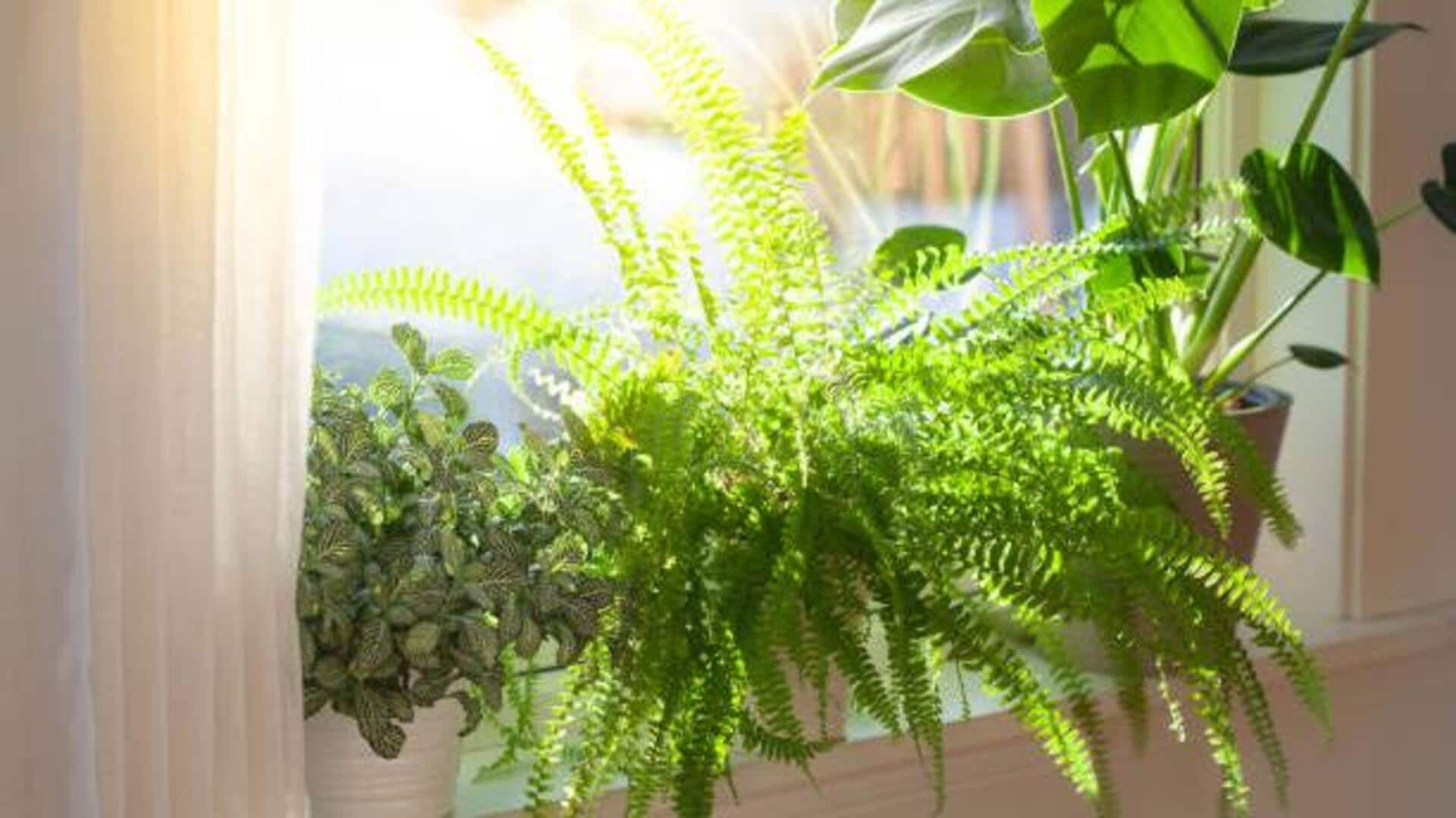
Where to place houseplants for ideal sunlight
What's the story
Sunlight is an essential element of a plant's growth and health. Keeping them in the right position can do wonders, resulting in healthy foliage and beautiful blooms. Knowing how to leverage sunlight can make a world of difference in your gardening. Here are five handy tips to position your plants for maximum sunlight benefits, ensuring they get the right amount of light throughout the day.
Light needs
Understand your plant's light needs
Different plants require different amounts of light. While some do well in full sun, others prefer partial shady spots. Knowing whether your plant requires direct sunlight or indirect light is important for placement. For example, succulents usually need full sun, while ferns thrive in shaded spots. Researching the needs of your particular plant will help you pick the best spot for its growth.
Sun patterns
Observe sun patterns
Observing how sunlight travels across your garden or indoor space throughout the day will help you decide where to position your plants. Take note of which areas get morning sun, and which get afternoon sun, and adjust accordingly. Morning sun is generally less intense and beneficial for many plants which can't tolerate harsh midday rays. This observation ensures every plant gets its ideal amount of light.
Rotation
Rotate plants regularly
Rotating your potted plants regularly also ensures even exposure of sunlight to all sides of the plant. This ensures balanced growth and prevents it from leaning towards one side. A simple rotation every week can help maintain symmetry. It also prevents uneven foliage development. This practice is especially useful for indoor plants placed near windows. Here, light may come from one side only.
Reflective surfaces
Use reflective surfaces
Using reflective surfaces such as mirrors or white walls can also maximize available light for indoor plants by reflecting extra rays onto them. This method works particularly well in winter months when natural daylight hours are limited. It is also effective when some areas of a room get limited direct sunlight due to obstructions like buildings or trees outside.
Seasonal adjustment
Adjust seasonally
As seasons change, the angle and intensity of sunlight also change, influencing how plants are lighted. Adjusting their position becomes imperative, like moving them to south-facing windows in winter for more exposure. This seasonal repositioning caters to shorter days in winter and longer ones in summer, ensuring plants receive adequate light without you having to do it every time.